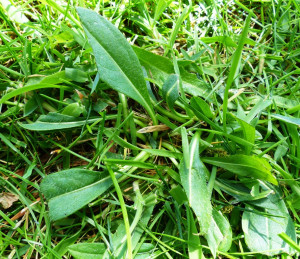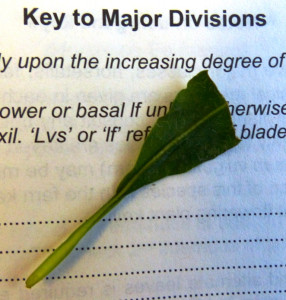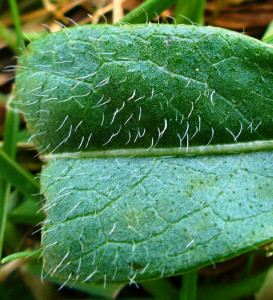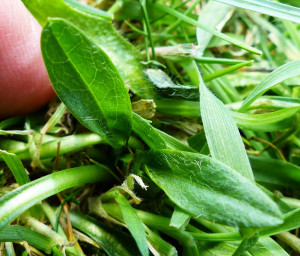By any reckoning 2013 has been a phenomenal year for Dr M. 2013 is the year when Dr M finally and Officially “Went Wild”. 2013 is also the year that Dr M invented “eXtreme botany”, thereby ensuring that botany will never quite be the same again.
Despite its undoubted and growing prominence in the cultural life of Britain, occasionally, very occasionally, Dr M gets a puzzled look, and a question is tentatively asked, “Dr M, what exactly is eXtreme botany?”
And so, especially for those few, very few, of you not yet fully versed in eXtreme botany, Dr M takes time out from his busy botanical schedule to explain this phenomenon (for phenomenal it certainly is):
Dr M’s 3 steps to eXtreme Botany:
Step 1: Take a look at Dr M’s eXtreme botany videos (not that they will help you, but it might make you smile, and Dr M promises (threatens?) there will be more!).
Step 2: Imbibe Dr M’s eXtreme botany sound bites (they won’t help much either, but Dr M enjoyed the challenge of composing them and he always enjoys exclamation marks):
(a) eXtreme botany is taking your identification skills to the next level.
(b) eXtreme botany is botany pushed to the limits!
(c) eXtreme botany is the fearless approach to plant identification at the edge of reason!!!
Step 3: Follow your leader Dr M’s eXtreme botany example:
They say a picture paints a thousand words and an example is the best learning tool. So here Dr M paints some pictures and an example scenario to explain eXtreme botany to his public:
 eXtreme botany Scenario: imagine a garden lawn. Then, imagine a plant in that garden lawn. Then, eyes tight shut, imagine that same lawn being mown. What happens? Well, that plant is quickly and unceremoniously reduced to a few straggly, hacked off leaves. Now imagine, Dr M appearing and asking: “What is this plant with such savagely severed leaves? Then imagine your response, “You must be joking Dr M?! Do you seriously expect us to identify this plant? It’s way too chopped!”
eXtreme botany Scenario: imagine a garden lawn. Then, imagine a plant in that garden lawn. Then, eyes tight shut, imagine that same lawn being mown. What happens? Well, that plant is quickly and unceremoniously reduced to a few straggly, hacked off leaves. Now imagine, Dr M appearing and asking: “What is this plant with such savagely severed leaves? Then imagine your response, “You must be joking Dr M?! Do you seriously expect us to identify this plant? It’s way too chopped!”
 But Dr M replies “I have never been so serious about anything in the whole of my botanical life!” and continues: “This may be a tough task, but it’s a suitable case for treatment by the eXtreme botanist!”
But Dr M replies “I have never been so serious about anything in the whole of my botanical life!” and continues: “This may be a tough task, but it’s a suitable case for treatment by the eXtreme botanist!”
And to doubly prove his point Dr M takes just a fragment of one of the remaining already highly chopped leaves and with hand lens and copy the splendid vegetative key to the fore, settles down to ponder the clues that this plant fragment offers. This is one example of eXtreme botany – attempting the identification of a plant from a leaf fragment!
 eXtreme botany Rule 1: Before doing anything else look at the plant fragment, listen to its story, what does it tell you?
eXtreme botany Rule 1: Before doing anything else look at the plant fragment, listen to its story, what does it tell you?
Well, Dr M followed rule 1 and listened to the fragment of lawn plant and, sure enough, it poured out its story. It told him a lot about its leaves: it told him they are very slightly toothed but not lobed, they have quite long hairs, they are net veined with translucent secondary veins, also the leaf has a cartilaginous margin and a strong white midrib down the centre. That’s quite a lot to be going on with, and quite a lot from just a fragment of leaf!
But the fragment was not sufficient to allow Dr M to answer one crucial question: are the leaves alternate or opposite?! Dr M guesses alternate and, following the vegetative key, gets to Centaurea nigra (Black Knapweed), however Dr M knows the hairs of that plant intimately and they are stubby and multicellular, not longish and unicellular as in this fragment! This leaf is NOT from black knapweed!
So: eXtreme botany Rule 2: If your sample is very eXtreme you may not be able to get a complete answer with confidence without either (a) trying several alternative pathways in the key (here take the alternative leaf route but also the opposite leaf route) or (b) going back to the whole plant to ask for more clues.
 So, Dr M follows rule 2(b) and goes back to the lawn and has a look at the remaining remains of the unfortunate plant. Now it becomes very clear that, although in a rosette and very chopped, the leaves are in opposite pairs! In addition to this new and important information, Dr M manages to find a couple of intact leaves to reveal a terminal hydathode. All of this information combines to confirm that the plant is a Scabious (Family Dipsacaceae), and specifically Succisa pratensis – the Devil’s Bit Scabious!
So, Dr M follows rule 2(b) and goes back to the lawn and has a look at the remaining remains of the unfortunate plant. Now it becomes very clear that, although in a rosette and very chopped, the leaves are in opposite pairs! In addition to this new and important information, Dr M manages to find a couple of intact leaves to reveal a terminal hydathode. All of this information combines to confirm that the plant is a Scabious (Family Dipsacaceae), and specifically Succisa pratensis – the Devil’s Bit Scabious!
And that, dear botanical friends, says Dr M, is eXtreme botany for you! And there’s a lot more where that came from!

